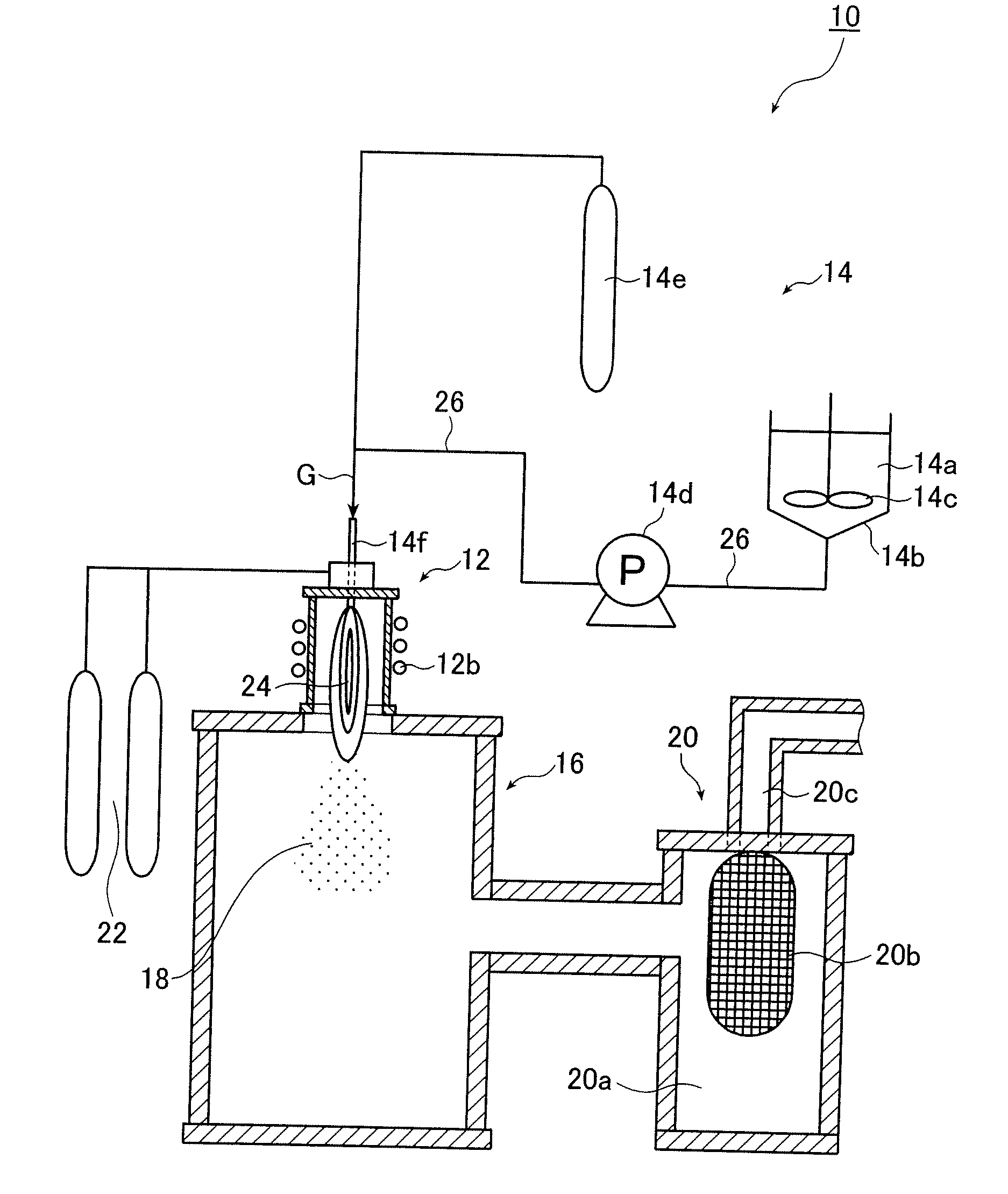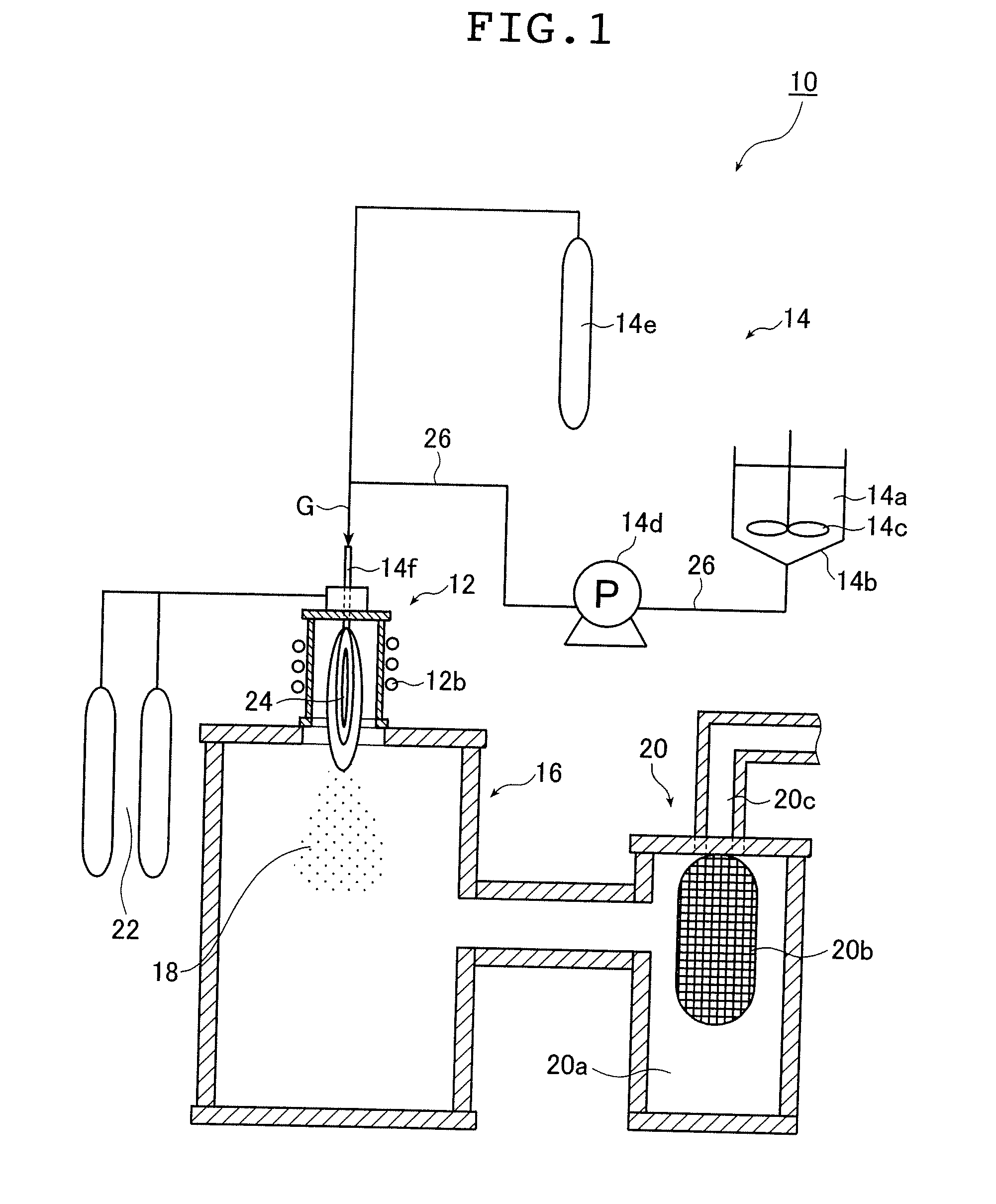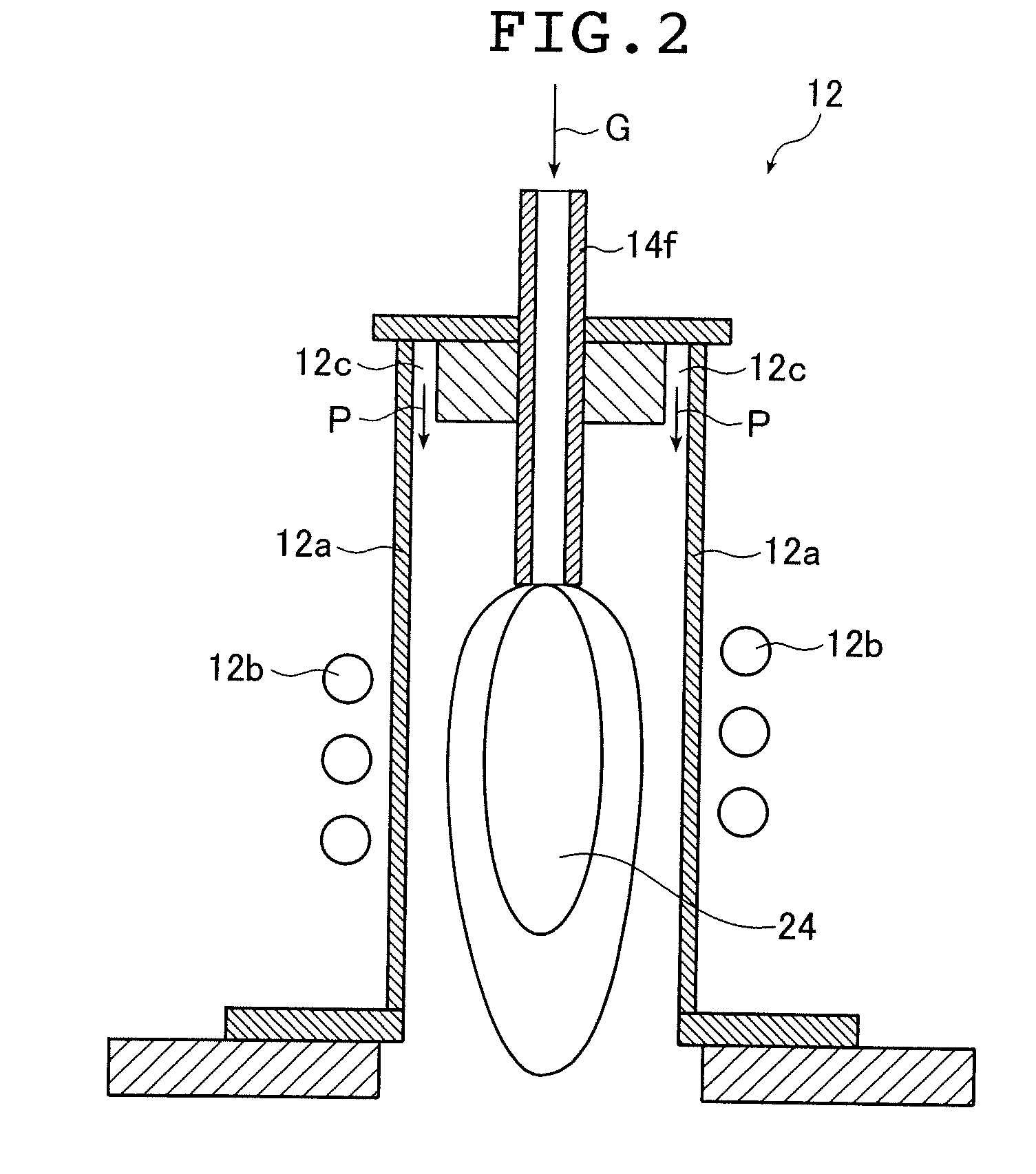Process and Apparatus for Producing Fine Particles
a technology of fine particles and processing equipment, applied in the field of processing equipment for producing fine particles, can solve the problems of affecting the uniformity of fine particles, affecting the quality of fine particles, etc., and achieves the effects of high functionality, high productivity, and increased recovery of fine particles
- Summary
- Abstract
- Description
- Claims
- Application Information
AI Technical Summary
Benefits of technology
Problems solved by technology
Method used
Image
Examples
example 1
[0247] An example of the first production mode using the fine particle producing apparatus 10 of the first embodiment shown in FIG. 1 as mentioned above and using a slurry of a raw material is explained.
[0248] According to the first production mode of the process for producing fine particles of the present invention, fine particles of aluminum oxide (Al2O3) were produced. First, a powdery raw material, a dispersant (sorbitan fatty acid ester), and an alcohol as a dispersion medium were mixed. The mixture was charged into a bead mill (manufactured by Kotobuki Industries Co., Ltd.) together with zirconia beads having a diameter of 0.5 mm, and the mixture solution was subjected to grinding. On this occasion, aluminum oxide was used as the powdery raw material and a mixture of powdery raw material:dispersant:alcohol=65:1:34 by mass was used.
[0249] To the mixture containing the ground powdery raw material and the dispersant in alcohol was further added kerosene (manufactured by Wako Pu...
example 2
[0255] An example of the second production mode using the fine particle producing apparatus 10 shown in FIG. 1 as mentioned above and also using a colloidal solution of a raw material is explained.
[0256] In this example, fine particles of aluminum oxide (Al2O3) were produced by the process for producing fine particles of the second production mode. A colloidal solution was prepared by a sol-gel method using an Al alkoxide as a raw material. Ethanol was used as a solvent and the same kerosene as that used in Example 1 (manufactured by Wako Pure Chemical Industries, Ltd., kerosine (Sp. Gr. 0.78 to 0.79)) was used as a combustible material. The kerosene addition amount was 15 [wt %] as the amount of kerosene [wt %] based on the total mass of the mixture containing the powdery raw material in ethanol.
[0257] The colloidal solution prepared by dispersing and mixing of the above-mentioned material for producing fine particles, solvent and combustible material was charged into the contain...
example 3
[0260] An example of the third production mode using the fine particle producing apparatus 10 shown in FIG. 1 as mentioned above and also using a solution prepared by dissolving a metal salt as a raw material in a solvent is explained.
[0261] In this example, fine particles of aluminum nitrate (Al(NO3)3) were produced by the process for producing fine particles of the third production mode. First, aluminum nitrate as a metal salt was dissolved in water to prepare a 20 wt % aqueous solution of aluminum nitrate.
[0262] The same kerosene as that used in Example 1 (manufactured by Wako Pure Chemical Industries, Ltd., kerosine (Sp. Gr. 0.78 to 0.79)) was used as a combustible material. The kerosene addition amount was 15 [wt %] as the amount of kerosene [wt %] based on the total mass of the aqueous solution containing the powdery raw material.
[0263] The solution prepared by dissolving and mixing of the above-mentioned aqueous solution of the material for producing fine particles and the...
PUM
| Property | Measurement | Unit |
|---|---|---|
| particle size | aaaaa | aaaaa |
| atomic numbers | aaaaa | aaaaa |
| atomic numbers | aaaaa | aaaaa |
Abstract
Description
Claims
Application Information
 Login to View More
Login to View More - R&D
- Intellectual Property
- Life Sciences
- Materials
- Tech Scout
- Unparalleled Data Quality
- Higher Quality Content
- 60% Fewer Hallucinations
Browse by: Latest US Patents, China's latest patents, Technical Efficacy Thesaurus, Application Domain, Technology Topic, Popular Technical Reports.
© 2025 PatSnap. All rights reserved.Legal|Privacy policy|Modern Slavery Act Transparency Statement|Sitemap|About US| Contact US: help@patsnap.com



